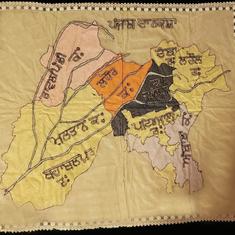The attack by the Taliban on Bagram air base north of Kabul on Saturday is a well calculated move. A direct pointed attack on the western troops has taken place after a considerable period of time.
The Taliban operations in the recent months have largely aimed at Afghan targets or aimed at making territorial gains. The statement by the North Atlantic Treaty Organisation on the incident said that at least 4 people have been killed and at least 14 have been injured in the attack on the Bagram base.
The nationality of those killed has not been revealed but it stands to reason that American lives have been lost.
Indeed, Taliban lost no time to not only claim responsibility for the attack but to commend the “strong attack”. Taliban spokesman Zabihullah Mujahid said a suicide bomber had targeted “a sports ground where more than 100 military officers, important people and soldiers were busy exercising.”
Bagram is a high-profile target, since it is by far the biggest American military base in Afghanistan. There are about 14,000 people in the Bagram base, more than half of whom are ‘contractors’ working for the Pentagon who are usually ex-servicemen.
The Taliban have once again demonstrated their capability to strike with impunity even the most secure military asset anywhere in Afghanistan.
Without doubt, the attack is an act of deliberate provocation. Coming only on the 4th day of Donald Trump’s victory in the November 8 election in the US, there is a powerful political message implied here.
This message has more than one vector. At its most obvious level, it is stark reminder to the president-elect and his advisors that although the Afghan war had hardly figured in the US election campaign, the grim reality is that the war is continuing and it remains a bleeding wound that needs attention.
Again, if American body bags are returning to the US following today’s attack, Trump is being directly challenged. Trump has projected an image of himself as a strong leader who is iron-fisted in crushing terrorism.
The Taliban taunt
The big question is whether the Taliban has acted on its own. The Taliban statement said the attack on Bagram has been in the making for four months. It is highly unlikely that the Pakistani intelligence was completely in the dark about such a major attack being staged on American military assets near Kabul.
At any rate, the attack on Bagram pointedly reminds Trump, if he does not know it already, that he simply has no option but to engage with Pakistan and that this ought to be right on top in his order of foreign and security policy priorities.
The point is, American lives are in jeopardy. Furthermore, the attack is underlining that Trump has to focus on the need of reaching an Afghan settlement involving the Taliban.
Again, Pakistan’s cooperation becomes a crucial factor in reconciling the Taliban. But Pakistan is vastly experienced in turning any such engagement with the US to its advantage.
In this case, at a minimum, today’s incident is an early reminder to Trump that Pakistan is no less important than India from the perspective of the US’ regional policies in South Asia.
Pakistan’s interest lies in bringing Trump to the forecourt of India-Pakistan tensions. Pakistan has always pleaded that unless its eastern borders are calm, it cannot commit resources optimally vis-à-vis the Afghan situation.
Viewed through the prism of Trump’s aversion toward foreign interventions – except when US’ interests are threatened – a question mark must be put on his inclinations to continue with the US’ military presence in Afghanistan beyond next year.
Would he judge that continued American military presence in Afghanistan is absolutely necessary for the US security interests? Or, could he veer around to the estimation that American interests can be safeguarded without undertaking such a direct, open-ended military intervention?
Again, Trump has stressed the need for cost-accounting in such circumstances. He has not shown much enthusiasm for the US’ leadership of NATO, either.
One real possibility is that Trump may be inclined to jettison the American thinking up until now to the effect that the US must be in the driving seat in the Hindu Kush.
What needs to be factored in is that the US’ Afghan intervention under the rubric of “war on terror” had a geopolitical dimension all through in terms of the containment strategies against Russia and China and the safety of the nuclear stockpiles in Pakistan.
Equally, it is well-known that American drone aircraft based in Afghanistan have been undertaking surveillance missions in the Iranian air space.
On the contrary, Trump’s approach is likely to be terrorism-centric. He may not wish to pursue the geopolitical agenda, given his stated approach to harmonise with Russia and to focus on trade and economic and currency issues with China.
Put differently, Trump may reach out to Russia and China and invite them to play a role in Afghanistan’s stabilisation. Russia has limitations in directly intervening in Afghanistan, given the backlog of the history of its bloody occupation in the eighties. Also, Russia has its hands full already in the Syrian conflict and a pull out is unlikely in a near future.
This is where the role of China becomes important. China is better-placed to assume the role of provider of security to Afghanistan. It is already giving security assistance to Afghanistan.
Besides, China wields big influence on Pakistan. China is also a ‘stakeholder’ in the stabilisation of Afghanistan both in terms of the security of Xinjiang as well as the smooth implementation of the hugely important geo-economic enterprise in the region, the $50+billion China-Pakistan Economic Corridor.
Interestingly, Afghanistan has applied for membership of the Shanghai Cooperation Organisation.










